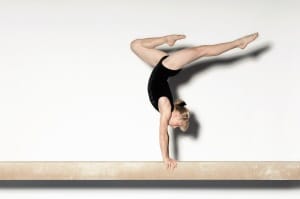The eating disorder risk that female athletes face is intuitive and counter-intuitive at the same time. On the one hand, it’s natural to assume that athletes know how to take care of their bodies as well or better than anyone else in the world. On the other hand, many athletes are under great pressure to train harder and longer than anyone else or to keep their body weight as low as possible. In a recent study of college students, eating disorders were three times as common in athletes compared to non-athletes. The incidence of eating disorders is likely even higher among professional athletes, where the stakes are more substantial and the pressure to perform even greater. Women in the general population are at greater risk than men for eating disorders, and the same is true of athletes. Historically, eating disorders have been strongly associated with sports like dancing, figure skating and gymnastics. The aesthetic elements of these sports, as well as the tight spins, jumps and high-flying tricks required of figure skaters and gymnasts, have long put pressure on these athletes to remain as thin as possible. In these sports, anorexia nervosa is the most common eating disorder. However, eating disorders, including anorexia and bulimia nervosa, are also problems in many sports that have not become as strongly associated with them. Distance runners and swimmers have been found to be at particular risk for bulimia. Anorexia appears in sports where it is necessary for athletes to be at or below a certain weight, such as horse racing, or in sports where qualifying for a lower weight class can give athletes a size advantage, such as wrestling or boxing. Rowers are also pressured to be as light as possible, since the rowers must move their own weight through the water as they race. Over-exercising is also a problem for athletes with eating disorders, or at high risk for one. Compulsive exercising, even when sick or injured, is one way that people suffering from bulimia will try to quickly expel the calories they have consumed. Exercise is a natural outlet for athletes, and even they may not recognize when their behavior has become excessive and unhealthy.
Difficulties in Diagnosis
One challenge with diagnosing eating disorders is that the behaviors that eventually lead to these illnesses may start out looking like healthy choices. Society in the United States and elsewhere tends to encourage people who want to shed pounds through dieting or by commencing an ambitious workout routine. Individuals with anorexia eventually become so thin that their condition is often difficult to ignore, but those with bulimia will often maintain an average weight in spite of their illness. In athletes, restricted eating and intense exercise are even more expected — and even admired. It becomes much more difficult for the average person to recognize when the intensity of athletic training and careful eating veers into unhealthy territory. And unfortunately, the people best able to recognize risky or unhealthy behavior—trainers, coaches and others with knowledge and experience—are sometimes the ones encouraging these excesses in pursuit of a higher level of performance. People suffering from eating disorders are often reluctant to admit that their behavior is unhealthy. This can be especially true for athletes, who may strongly believe that they are simply demonstrating the dedication to their sport that is necessary to succeed.
A Tool for Identifying At-Risk Athletes
In an effort to assess the prevalence of eating disorders among today’s female athletes, and to develop a tool that can be used to identify those at risk, researchers in Norway recently performed a study that tested the performance of several experimental eating disorder questionnaires. Ultimately, they settled on one questionnaire that they hope will be able to quickly and reliably assess the presence or risk of eating disorders among athletes around the world. Many experts believe that the number of amateur and professional athletes diagnosed with eating disorders is still far below the true number suffering from these illnesses. They hope that a quick and reliable tool, such as what the Norway group is aiming toward, can help to get many more such athletes the help that they need.

